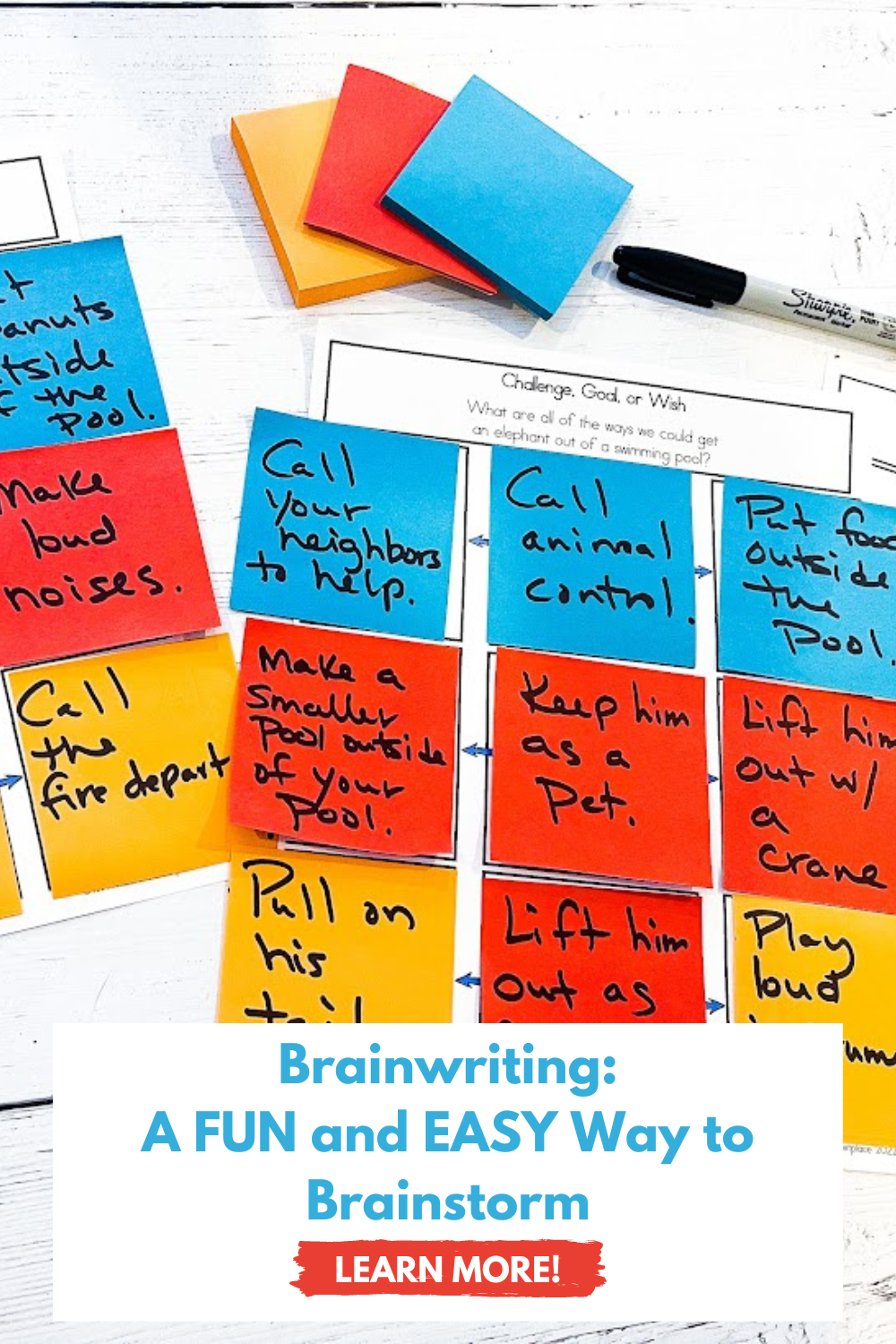We have all heard of brainstorming, but have you ever heard of brainwriting? In my most recent grad class, Facilitating Creative Problem Solving, I learned a thousands different ways to get both adult and student brains working, thinking creatively, and warmed up for the lessons or work to come.
Brainwriting was one of my absolute favorite tools.
Here’s a quick synopsis of how this works.
1. Break the participants into groups of 3-5.
2. Place a few copies of the brainwriting page with the challenge, goal, or wish labeled across the top (this is available for download here). This challenge could be just for fun OR have a direct connection the lesson you are about to teach.
Examples:
*”What are all of the ways we could get an elephant out of your swimming pool?”
*”Bees just swarmed your entire car. How can we get them off?”
*”Students are struggling with math fluency. What are all of the ways you could help improve this skill for ALL students?”
3. Have stacks of regular-sized post-its and markers on the table for participants to use. Once you explain the challenge, have each participant write their ideas, without talking, on the post-its. One idea per post-it. The first person places his or her THREE ideas on the first row of the brainwriting paper.
4. Once one person places THREE ideas on the top row, they put the paper back in the middle of the table and then take another paper that a different person has already completed. Now, the person reads the previous ideas from this sheet and comes up with THREE more ideas. These post-its with the new ideas go in row 2 of the brainwriting page.
5. After generating ideas for row 2, the sheet goes back in the middle. Each person then takes another sheet until all of the brainwriting sheets are completely filled up. It’s important that you remind everyone that they should be generating ideas of their own, but also making new connections based on the previous person’s ideas on the sheet.
6. Once this process is complete, all of the sheets can be placed on the table to view. If you would like to have the group narrow down ideas, you can have them place a few stickers on their favorite, most creative, or most “doable” ideas on the papers.
After doing this activity a few times with adults, I can honestly say that I absolutely love the ideas generated from brainwriting. Instead of simply brainstorming by yourself, you are collectively grabbing ideas from everyone and building upon each others’ thoughts.
Here is a quick video showing you how this could work. Imagine that each row is completed by a different person.
The ideas should be wild, crazy, unusual, and can build off of previous ideas!
This can work in so many scenarios across subject areas and across age groups.
It can work for students who are looking for ideas on ways to improve classroom behavior, for students generating ideas for writing topics, for creative writing projects, for kids who are stuck in the writing process, and so much more.
This can also serve as a great way to get brains working hard at the beginning of a lesson OR simply as a brain break.
I would also highly recommend using this with teachers at professional development sessions, faculty meetings, or grade level meetings when you are trying to come up with new and innovative ways to solve problems in the district, school, or classroom.
Try this out and let me know what you think OR if you have any thoughts on how to make this activity even better!
Again, you can grab the brainwriting template for FREE here.
Happy Teaching!
-Dan
PS- Brainwriting comes from the book “Create in a Flash.” If you haven’t read it, I would highly recommend grabbing it here.
